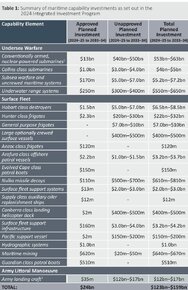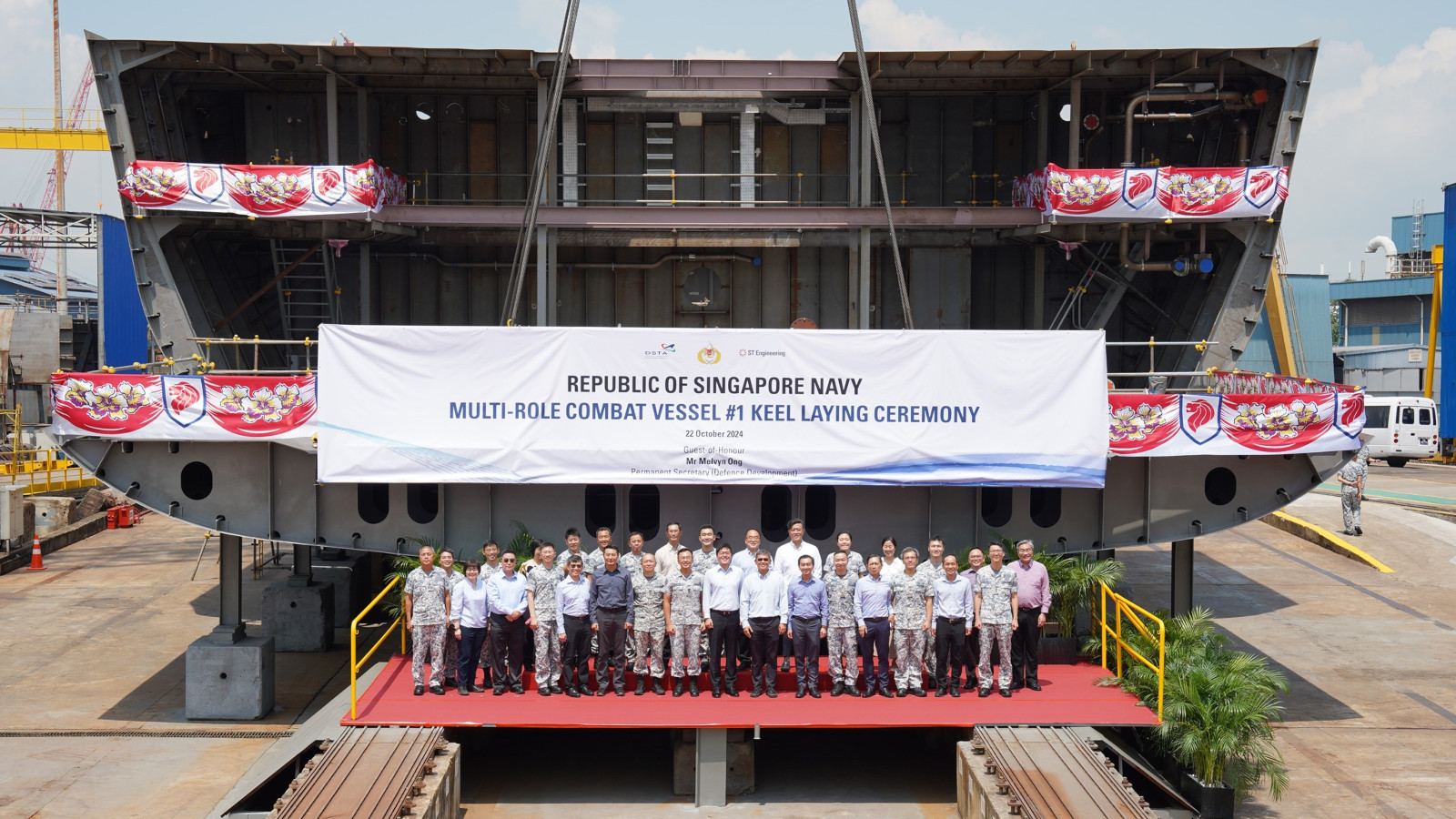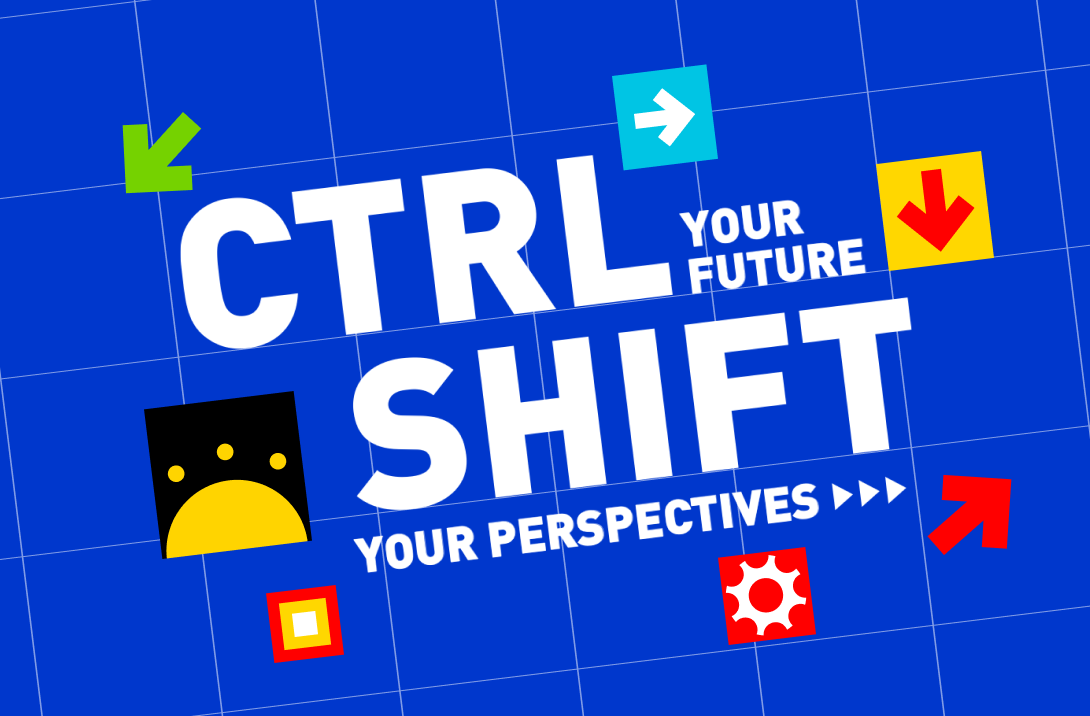Just a couple of things about the Mogami CIC. It does look good. My view is that combat operators and warfare officers will like it (on the asumption that it is the final selection). It is however not that revolutionary or different to more traditional CICs.
That CIC looks amazing.
Too late to change the Hunters??
The mogamis are designed around their mission and requirements. Cutting and pasting that CIC into a Hobart or a Hunter or a LHD doesn't work, not without significant reworking.
On a small ship with lean crewing, it makes sense to have many people able to access many things easily. That being said, for high intensity stuff, this is a trade off, You have few people looking at many screens, sensors etc, not many people manning a single console. For a ship like the Mogami, which is probably doing one thing at a time, and operating within broader more capable command capability bubbles, this is fine. Most of the time, its sailing, launching or retrieving drones, doing basic ASW work etc. But there are trade offs, everything is a trade off. No free lunches. In complex high threat high tempo operations, this kind of layout would suffer.
The Hobarts and the Hunters are more command capable and are expected to operate in higher threat environments and therefore will use more crew. But can do more things at higher intensities for longer. They would be perfect compliments to this type of ship.
The whole lean crew thing has been a big development area over the last 20 years with some significant failures. What we seem to be coming around to is a ship with around 100-120 in a 5000-6000t frigate, as a bit of a general sweet spot. There are now several ships of this type being built by several different navies, to several different designs. The italian patrol frigates, the Constellation class, Type 31 and mogami, are all very different ships, but there are some themes to connect them.
These navies aren't abandoning big ships however. All of them operate larger, more crew intensive more capable surface combatant ships.
At 28 years, Warramunga was to be decommissioned in 2029 but now it will be after the 1st GPF enters service in 2030, so 2030/2031.
The delivery of the first GPF is critical. We will have to see what and when is actually delivered, but there may be interest in some sort of early delivery.
Maybe they will drag out Arunta's decommissioning if they do the NSM upgrade. Anzac is a Christmas Tree being stripped for parts. A decision on the GPF is taking WWAAYY too long. I feel it's all political. If the balloon goes up we are all screwed. When was the last time a federal politician had the security of the nation at heart?
While it certainly feels that way. The Japanese are currently spamming out Mogamis in 18 month cycles. Their process is going flat out if we are a part of it or not. By 2030 they may have another 10 FFM30 ships in the water. We don't want to rush into decisions, but also we have taken a very long time to select platforms that died before competition or were cut down or bailed on very quickly.
The period 2027-2030 is hyper critical. It is expected either there will be a high intensity peer conflict between China/USA or at least some sort of massive escalation, but it also couples with other issues like economic, demographic etc.
Australia has been pretty active. We have upgraded the hobarts and fired NSM/SM6/Tomahawk. Anzacs get their stuff. We have a full set of F-35As, we have the Superhornets. We are ok. But we also aren't in great places with the Anzac fleet, new ship build deliveries, subs etc. But we are trying frantically. I don't think we are screwed. But we could be in a much better position. Being in a weaker position ourselves, means we have little credibility to pressure allies to pick up their game, when our game has problems.
Ultimately we will have to use what we have.
If war does break out, my fear is that the US will not be able to supply us with a SSN. That is a completely reasonable and possible outcome, it may even be likely. If war does break out we may not be getting any Mogami/A200 ships from overseas.
Stop promoting and listening to unqualified, inexperienced, non technical, often unintelligent, while sidelining technical experts and in particular, technical generalists.
We really need more technical people on the political side of things. Not just about platform choices but about processes. The political class believes they can overcome engineering and physics with legislation and money. It can't, not on big things.
We aren't spinning up to speed on our sovereign capability fast enough. It is ten times cheaper and 100 times easier to speed up that process now than in 2 years . We still have access to global markets, money, people funding, and have time to use those things. Need a new CNC, we can buy that and get it delivered. We want 50 of them? We can do that. We want to triple the 155 and 127 shell production? Do that now. Not in 5 years time.
We aren't taking political lessons from Ukraine. We aren't even stockpiling strategic raw materials and semi completed goods, China has been doing this for nearly 10 years. Copper wire, pipe, plate, advanced alloys, chemical precursors etc. While we have a lot of raw stuff, and we even process some of it, we don't have much in the way of strategic stockpiles, because normally it just gets shipped overseas.
We have problems, it's not just ships, ships are another symptom of the problem. Its not an Australian manufacturing problem it's an Australian Political problem. I think we need more politicians openly and actively touring Ukraine and seeing the issues they are coming up with face to face. I would support every single politician at the state and federal level to tour Ukraine in the next 12 months. No other tours in europe, Fly into Poland, bus to Ukraine, 1 week tour, fly back. Everything is framed as this is where we will be in 3 years, but worse, and it will be a global problem, how can we prepare better. Processes and views need to change.
This idea that we can basically continue with no major effort on ourselves, into WW3, and get by with just some improved munitions is disturbing. The munitions help, but doesn't address all the other issues. We are still believing that we will never have to fire any of these weapons in anger, and they they just need to exist in small numbers as deterrent value only.
But we saw basically the same thing in both WW1 and WW2 and during the Cold war. Clearly predictable events, poor/ineffective preparation.
Even if we got 3 mogami by 2029 its not going to solve our issues. Its an improvement, but we need to be doing many more things. IMO







